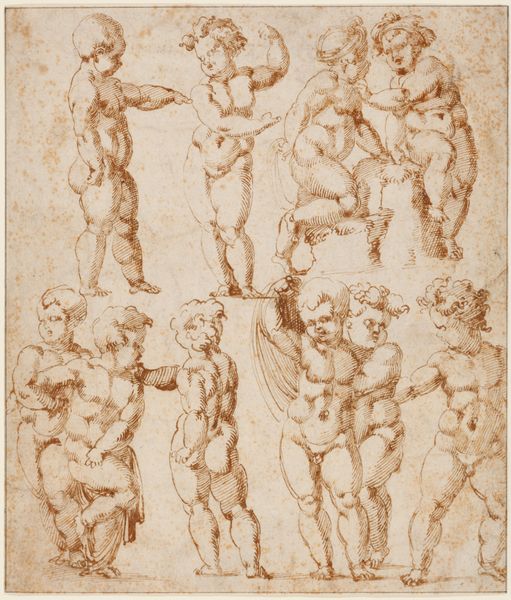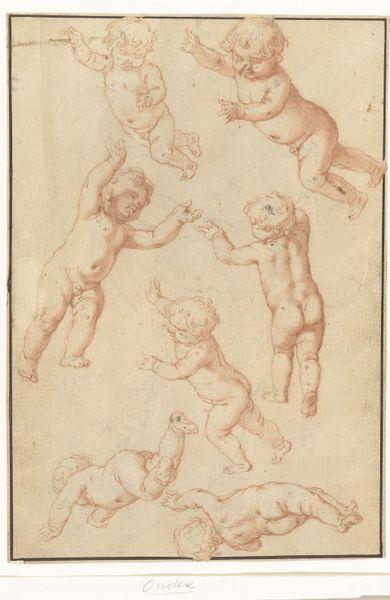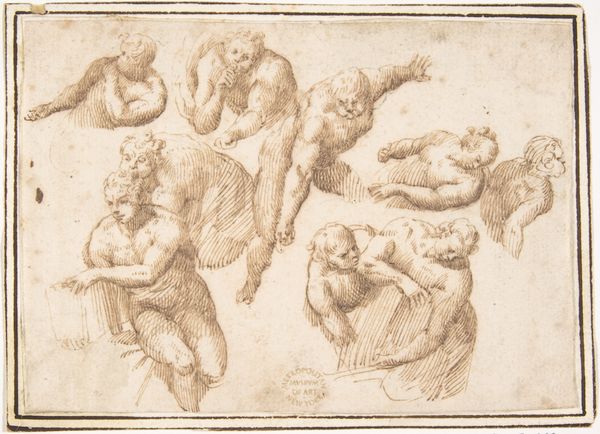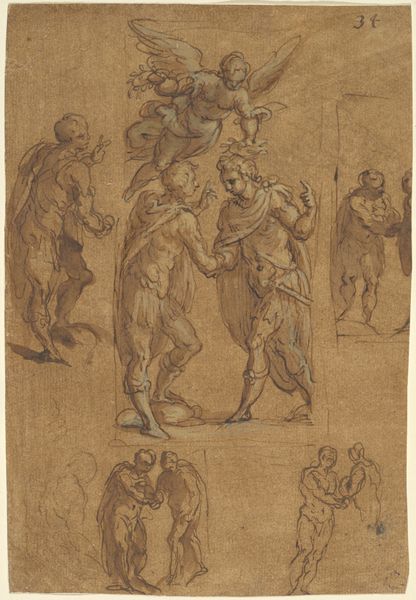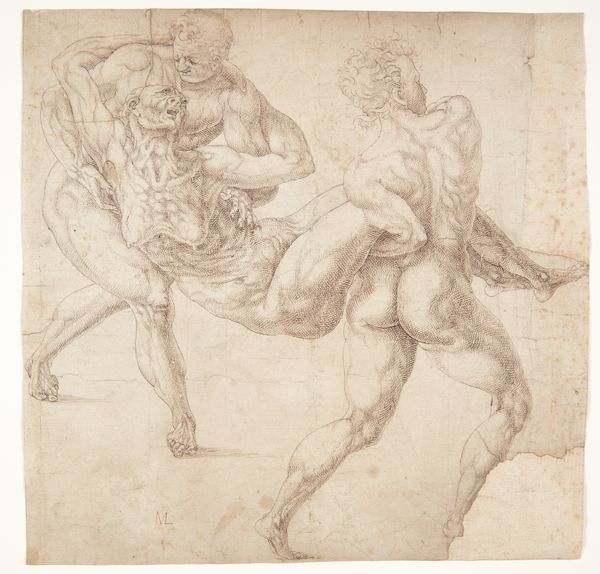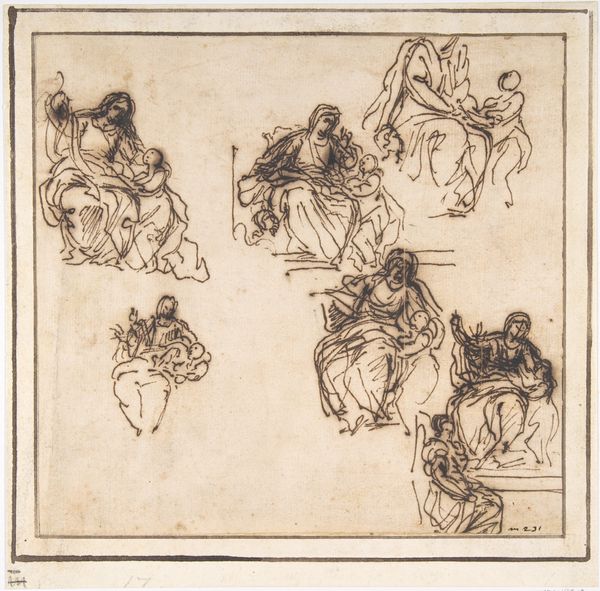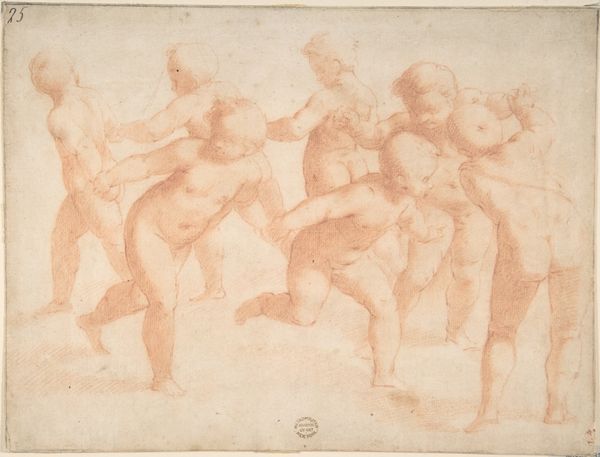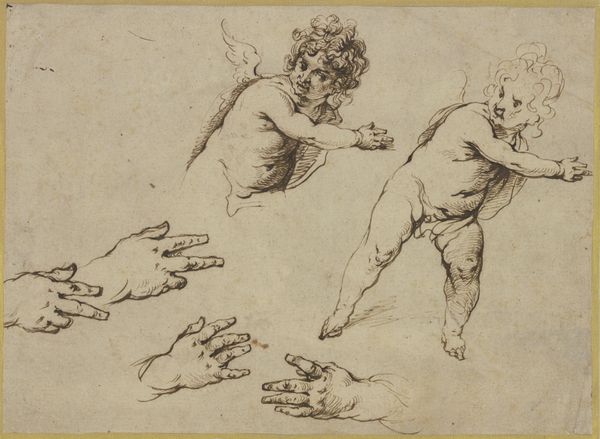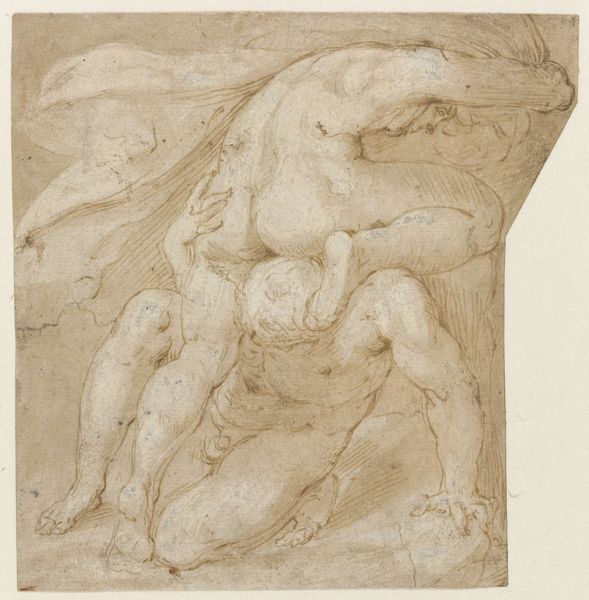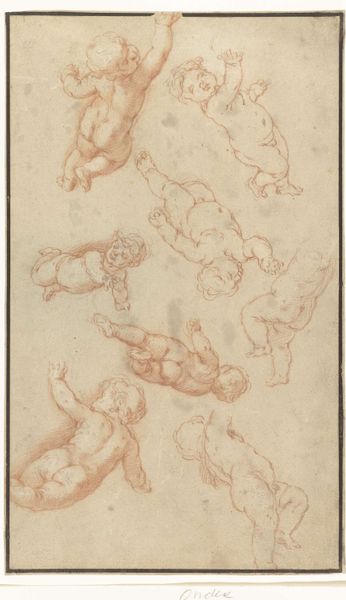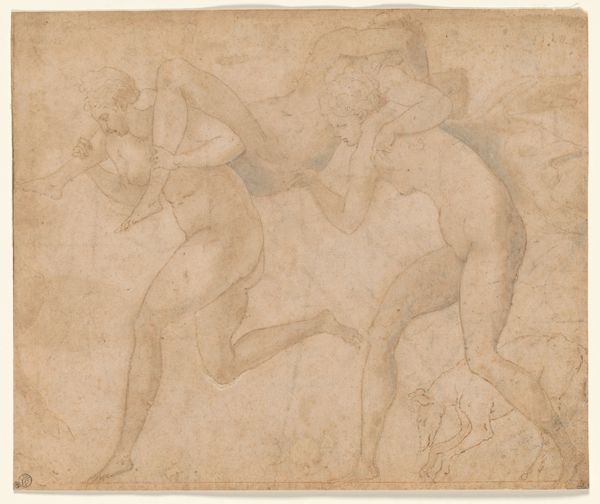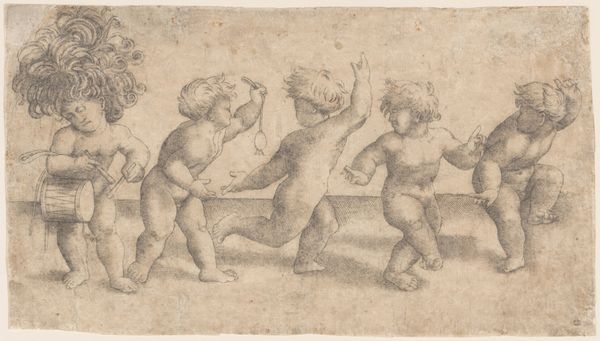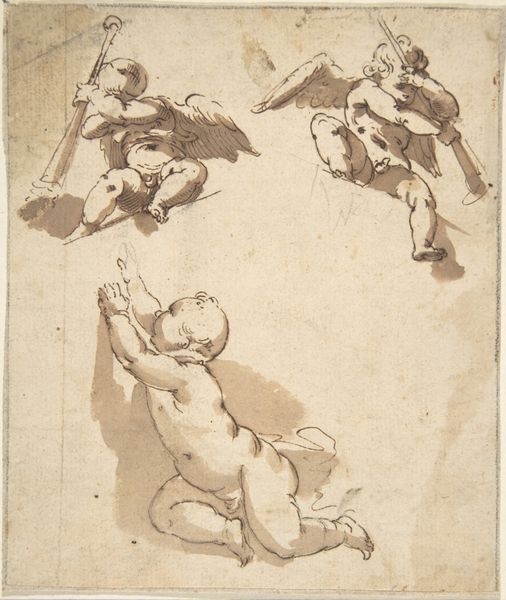
drawing, paper, ink
#
portrait
#
drawing
#
figuration
#
paper
#
11_renaissance
#
ink
Dimensions: height 237 mm, width 235 mm
Copyright: Rijks Museum: Open Domain
Editor: Here we have Maarten van Heemskerck's "Five Hovering Angels," a drawing done with ink on paper from the 1530s, currently residing in the Rijksmuseum. There's something dynamic and fleshy about the figures - all these cherubic, active forms drawn on what seems to be thin paper. What strikes you about it? Curator: The paper itself speaks volumes. Its relative affordability compared to other surfaces would dictate it being a preliminary sketch, perhaps for a larger work, or used within a studio for teaching purposes. We can observe labor through the artistic process, each stroke indicating planning. Editor: Planning, definitely! I see the dynamism in the figures' movement; but I'm curious about your point concerning labor. Is drawing considered labor? Curator: Absolutely! Consider the preparation of the ink, the careful handling of the paper. The drawing could also act as models for sculptures, embroideries or other artworks which involved various forms of labour by many people, depending on workshop practices, for whom these sketches acted as instructions. Editor: Ah, like a Renaissance factory schematic of sorts! I never thought about the connections that way. Curator: Indeed. These were commercial and highly competitive industries. Now think about the social functions. Was this solely commissioned by a wealthy patron? Was it replicated in printed form for wider consumption? How accessible were Heemskerck's designs at the time? All of this adds layers of interpretation, beyond the subject itself. Editor: That completely reframes the work for me. It’s not just an isolated piece; it's a document reflecting production, consumption, and even accessibility within its time. It becomes this crucial artifact illustrating the processes around artmaking. Curator: Precisely. Focusing on the material reality behind it exposes hidden narratives beyond just aesthetics. Editor: Thanks; I’ll never see drawings in the same light. I appreciate this expanded perspective.
Comments
rijksmuseum about 2 years ago
⋮
The Strong Men series clearly reveals Heemskerck’s fascination with the very latest creations of his Italian colleagues. He must have frequently copied such contemporary examples. This is one of his few surviving drawings after such a work. He took the playful angels from a fresco in the Vatican made by Raphael’s most important pupil Giulio Romano in the 1520s.
Join the conversation
Join millions of artists and users on Artera today and experience the ultimate creative platform.
